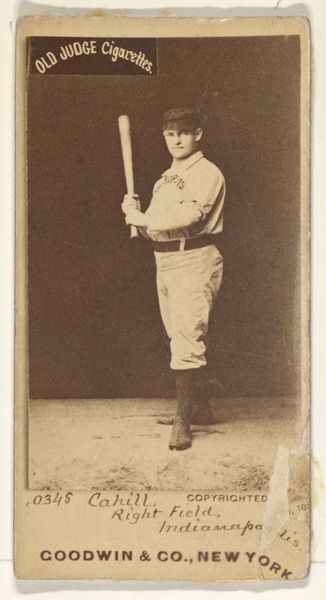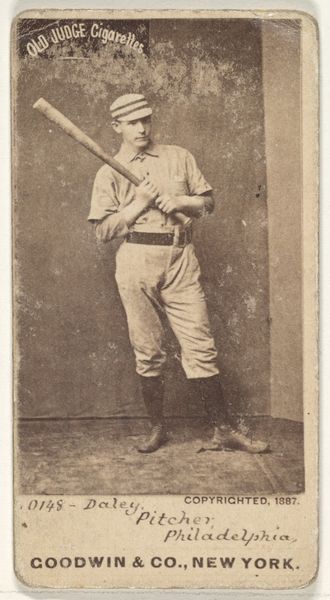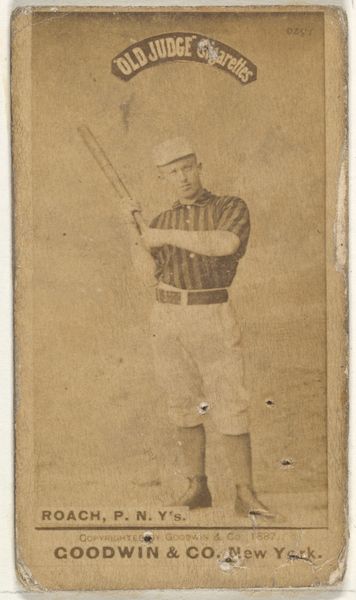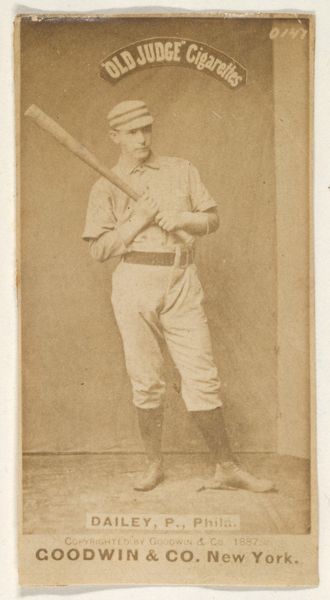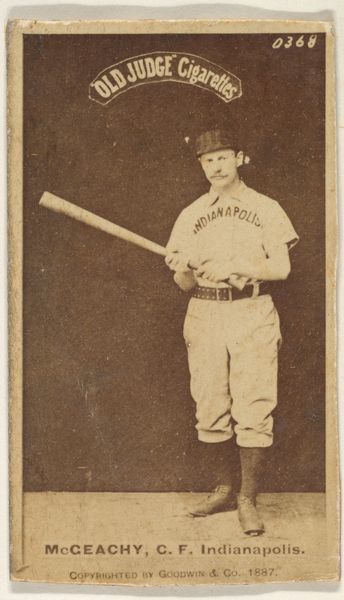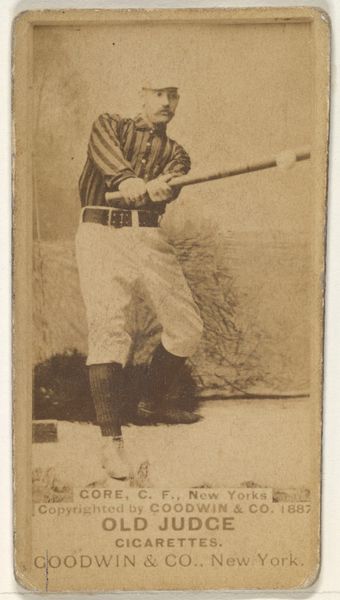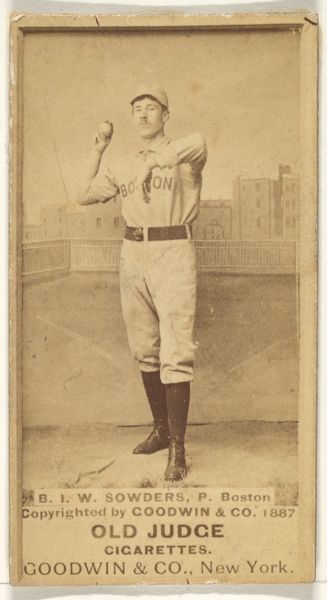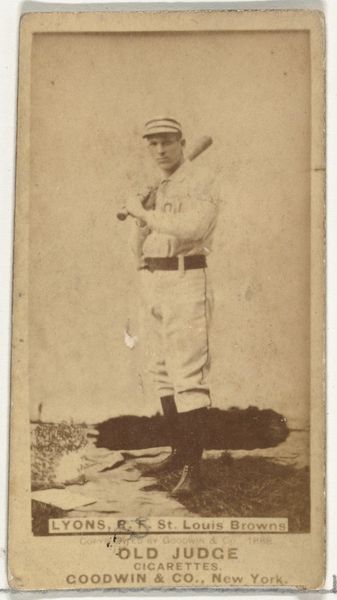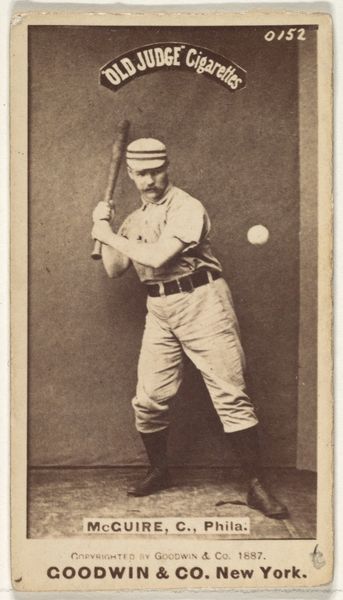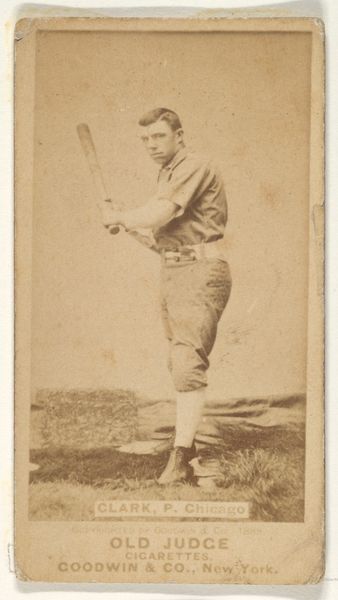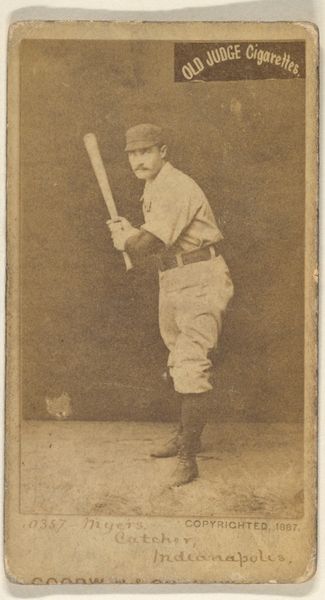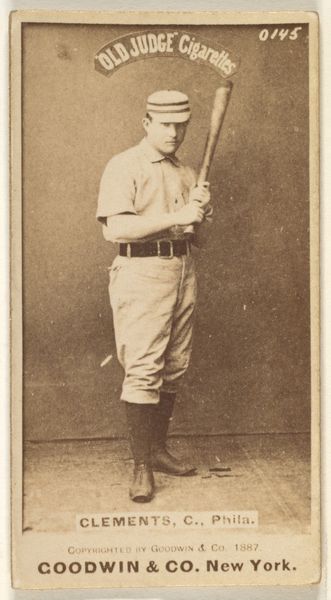
John F. Roach, Pitcher, New York, from the Old Judge series (N172) for Old Judge Cigarettes 1887
0:00
0:00
drawing, print, photography, albumen-print
#
portrait
#
drawing
# print
#
photography
#
ashcan-school
#
albumen-print
Dimensions: sheet: 2 11/16 x 1 3/8 in. (6.9 x 3.5 cm)
Copyright: Public Domain
Editor: This is “John F. Roach, Pitcher, New York” from the Old Judge series, created by Goodwin & Company in 1887. It’s an albumen print, a type of photography. It feels like more than just a simple baseball card. What layers do you see within this piece? Art Historian: This unassuming baseball card offers a fascinating lens through which to view late 19th-century American culture, beyond just sports. Consider the broader context: industrialization was booming, immigration was transforming cities, and anxieties about masculinity were prevalent. This card, mass-produced and distributed with cigarettes, taps into those anxieties and aspirations. Editor: How so? Art Historian: Baseball, at the time, was being constructed as an ideal of masculine prowess and integrity—a reaction against the perceived effeminacy of an increasingly white-collar world. But even more, the commercial nature of this image… it’s directly tied to the rise of consumer culture and its impact on social values, gender roles and even health since this was used as marketing for cigarettes. Notice anything interesting about Roach himself? Editor: He seems very serious, and his clothing is really different than what athletes wear now. Art Historian: Precisely. His gaze, his pose… they’re all carefully constructed. Think about the rise of photography, its democratizing effect, but also its potential for manipulation. Who got to be represented? Whose image was circulated and consumed? This card represents the confluence of sport, commerce, and constructed identities. Editor: Wow, I never considered all of those aspects. I initially thought of it just as vintage sports memorabilia, but it’s much more than that. Thanks. Art Historian: It's these connections to larger social structures that illuminate the image beyond its surface, to help us better grasp the tensions and textures of the late 19th century. A closer examination can always rewrite assumptions of any visual piece.
Comments
No comments
Be the first to comment and join the conversation on the ultimate creative platform.
